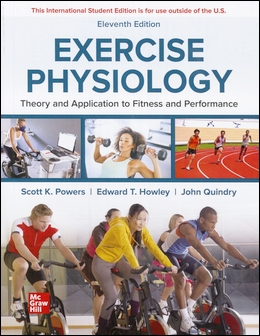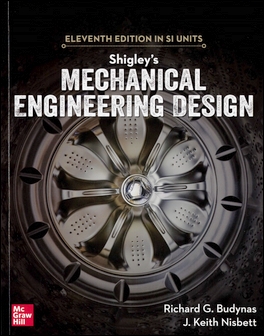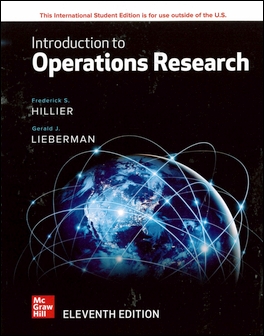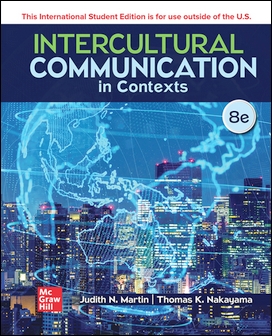書籍分類

(E-Book) Exercise Physiology: Theory and Application to Fitness and Performance 11/e
作者:Scott Powers, Edward Howley, John Quindry
原價:NT$ 900
ISBN:9781260589641
版次:11
年份:2021
出版商:McGraw-Hill
頁數/規格:電子書
版次:11
年份:2021
出版商:McGraw-Hill
頁數/規格:電子書
內容介紹 本書特色 目錄 作者介紹
- 電子書訂購前請先詳讀:
- 訂購付款完畢後,請填寫 電子書回報資料-官網訂單,資料若不全,將影響您後續派送權益
- 查看 電子書平台登錄與註冊說明
- 查看 電子書平台操作手冊
- 此訂單為電子書,非紙本課本,電子書兌換碼一旦派送,則無法辦理退貨。
- 若有任何問題請 Email 至 ebook@tunghua.com.tw
帳號訂購流程
Step 1 登入會員 非東華網站會員,請點選右上角『註冊』。
Step 2 點選 『加入購買』填寫相關資料,並確認訂單無誤後,即可送出訂單。
Step 3 審核訂單 訂購單會盡力於24小時內(遇周末假日順延)審核,確定有庫存,系統會發送『付款通知信』至指定信箱。
Step 4 付款 收到付款通知信後,請於七天內付款。
Step 5 電子書兌換碼 確認入帳後,約 1-3 個工作天派送電子書兌換碼,會發訊息至您的個人 email 信箱。
- Preface
The eleventh edition of this book has undergone major revisions. Identical to all previous editions, this edition of Exercise Physiology: Theory and Application to Fitness and Performance is intended for students interested in exercise physiology, medicine, clinical exercise physiology, exercise science, human performance, physical therapy, and physical education. The objective of this text is to provide the student with an up to-date understanding of the physiology of exercise. Moreover, the book contains numerous clinical applications including a discussion of the benefits of exercise for multiple sclerosis patients and the latest information on sports-related brain injuries.
This book is intended for a one semester, upper level undergraduate or beginning graduate exercise physiology course. Clearly, the text contains more material than can be covered in a single 15-week semester. This is by design. The book was written to be comprehensive and afford instructors the freedom to select the material that they consider to be the most important for their course. Furthermore, if desired, the book could be used in a two semester sequence of exercise physiology courses (e.g., Exercise Physiology I and II) to cover the entire 25 chapters contained in the text.
NEW TO THIS EDITION
The eleventh edition of this book has undergone major revisions to include the latest research in exercise physiology. Importantly, Dr. John Quindry was recruited to join the author team to provide additional expertise in several chapters of the text. To improve the book, every chapter contains new and expanded discussions, new text boxes, new figures, updated references, and contemporary suggested readings.
New Topics and Updated Content
The content of this edition has undergone significant revision to provide up-to-date information across all three sections of the book. Specifically, each chapter has been revised and updated to include new and improved box features, new illustrations, new research findings, and the inclusion of up-to-date references and suggested readings. The following list describes some of the significant changes that have been made to make the eleventh edition more complete and up-to-date:
Chapter 0: This chapter underwent a major revision to provide numerous new elements including a discussion of the research process in exercise physiology, an overview of the scientific method, and a summary of the types of research performed in exercise physiology. A new segment also explains how to read and understand scientific journals articles. Further, a fresh section was added to explain how to search the scientific literature. The chapter closes with an up-to-date discussion on careers in exercise physiology and related fields.
Chapter 1: A new section was added to introduce the major types of ergometers used in exercise physiology laboratories. A new figure was inserted to illustrate the differences in running economy between runners varying in experience and ability.
Chapter 2: The chapter was revised to include an expanded discussion of the gain of a biological control system. A New Research Focus box was provided to introduce the concept of exercise-induced hormesis.
Chapter 3: New material has been included to explain the biological wisdom behind why skeletal muscle stores carbohydrate in the form of glycogen. New Research Focus box added to discuss the formation of free radicals in skeletal muscle fibers. New "Ask the Expert" box with Dr. Wayne Willis introduces a simple hydraulic model to assist students in better understanding oxidative phosphorylation.
Chapter 4: Addition of new "A Closer Look" box to discuss VO2 max and its verification. New information provided to discuss the role that excess postexercise oxygen consumption plays in exercise induced weight loss. New figure added to illustrate the Cori cycle.
Chapter 5: This chapter underwent significant revision to include numerous new and improved figures along with an expanded introduction to the basics of endocrine and neuroendocrine physiology. Moreover, updated information was added on both glucagon and cortisol responses to exercise. New information was provided on skeletal muscle as an endocrine organ.
Chapter 6: Update on the latest research findings about the impact of exercise on the immune system. A new illustration was also provided to facilitate student learning.
Chapter 7: Numerous new figures were added to illustrate key concepts. New discussion on exceptions to the size principle were provided in A Closer Look box. New information provided on the central governor theory of exercise -induced fatigue. Finally, the latest research about exercise and brain
health was included.
Chapter 8: Expanded discussion of the steps involved in excitation contraction coupling. New information on the causes of exercise-induced muscle fatigue is presented, Numerous new figures added to improve student learning. New information added to define the four domains of exercise intensity.
Chapter 9: New and improved figures added throughout the chapter. Updated information on exercise-induced cardioprotection was also added. Latest information provided about autonomic control of heart rate and cardiac afterload during exercise. Updated information included to describe exercise.
induced changes in blood flow to organs throughout the body, Latest information about the blood pressure responses to high intensity intermittent exercise was also provided.
Chapter 10: Numerous new figures added to chapter to better illustrate concepts related to respiratory system function during exercise. New information provided to explain the changes in breathing patterns that occur during exercise. Latest research provided about the control of breathing during exercise.
Chapter 11: Several new and improved figures provided to illustrate concepts related to acid-base balance during exercise.
Chapter 12: New box feature added to illustrate the conversion of degrees Fahrenheit to degrees Celsius. Latest information provided on thermoreceptors and their role in temperature regulation during exercise.
Chapter 13: This chapter underwent major revision to focus exclusively on the physiology of aerobic and anaerobic exercise training. Latest research provided about the impact of genetics on VO2 max and individual responses to exercise training. New box feature added to discuss microRNA's and the adaptive response to exercise training.
Chapter 14: This is a new chapter in the 11th edition of the book that focuses entirely on the physiological effects of strength training. Specifically, this chapter provides the latest research on resistance training-induced changes to the motor control system and within skeletal muscle fibers. Moreover, the chapter contains a thorough discussion of resistance training-induced changes in muscle biochemistry along with the influence of resistance training on bone and ligament strength. The chapter also discusses detraining following strength training along with the impact that concurrent strength and endurance training has on strength gains.
Chapter 15: This chapter appeared as Chap. 14 in the last edition. The new chapter 15 underwent a major revision to focus on the role of exercise in preventing chronic disease. Major changes include updated information on the risk factors for chronic disease (e.g., hypertension, dyslipidemia, obesity) and
a state-of-the art review of the metabolic syndrome. Further, a new section was added on the impact that regular physical activity has on both diabetes and cancer.
Chapter 16: This chapter was Chap. 15 in the previous edition. The chapter was revised to provide new information linking V.O2 max to health outcomes, updated research about the health impact of different exercise intensities (e.g., vigorous vs. moderate-intensity exercise) on achieving health-related outcomes. Moreover, new information on the latest physical activity recommendations is provided along with a new appendix for determining the energy cost of common exercises.
Chapter 17: This chapter was updated to provide new information about exercise prescriptions in diabetic, asthmatic, hypertension, cardiac rehabilitation, chronic obstructive pulmonary disease, aged, and pregnant populations. A new section detailing exercise prescription recommendations and special considerations for cancer patients was also added. Finally, a new Ask the Expert box featuring Dr. Kathryn Schmitz was added to discuss exercise rehabilitation for cancer patients.
Chapter 18: This chapter underwent extensive revision to provide a state-of-the-art introduction to the science of nutrition. This includes an up-to-date discussion of both macronutrients and micronutrients in the diet along with the current nutritional guidelines and requirements. The discussion on body composition underwent extensive revision to provide a contemporary introduction to the major methods used to determine body composition. The chapter closes with a detailed discussion about body energy balance, popular diet plans, and research related to weight loss and management, Further the impact of exercise combined with diet on weight loss is discussed in detail.
Chapter 19: Updated information was included on radical production and muscular fatigue during exercise. Numerous new figures along with new information about the factors affecting short-term performance and the possible sites of central and peripheral fatigue were added.
Chapter 20: (Chap. 21 in 10th edition) Note that key information from Chap. 20 (10th edition) was updated and included in this revised chapter. For example, new information and figures on laboratory tests to determine endurance exercise potential were provided. Also, fresh information on the measurement of peak running velocity as a predictor of performance was included. Further, several new figures added to illustrate overtraining, individual responses to training, and exercise metabolism during competition. Information was updated about the impact of high-intensity interval training on physiological adaptation.
Chapter 21: (Chap. 22 in 10th edition) New figures added along with a new section discussing the impact of the menstrual cycle influence on performance and training. Latest information on eating disorders in female athletes.
Chapter 22: (Chap. 23 in 10th edition) A new discussion was added to debate the role that antioxidant vitamin supplementation plays in blunting the training adaptation in skeletal muscles.
Chapter 23: (Chapter 24 in 10th edition) A new figure was included along with new information about exercise at altitude, erythropoietin, and red blood cell production.
Chapter 24: (Chap. 25 in 10th edition) Updated information added throughout the chapter. New section provided to discuss the athlete biological passport as a technique to monitor performance enhancing drug use in competitive athletics.
- Table of Contents
Section 1 Physiology of Exercise
CHAPTER 0: Introduction to the Physiology of Exercise
CHAPTER 1: Common Measurements in Exercise Physiology
CHAPTER 2: Control of the Internal Environment
CHAPTER 3: Bioenergetics
CHAPTER 4: Exercise Metabolism
CHAPTER 5: Cell Signaling and the Hormonal Responses to Exercise
CHAPTER 6: Exercise and the Immune System
CHAPTER 7: The Nervous System: Structure and Control of Movement
CHAPTER 8: Skeletal Muscle: Structure and Function
CHAPTER 9: Circulatory Responses to Exercise
CHAPTER 10: Respiration during Exercise
CHAPTER 11: Acid-Base Balance during Exercise
CHAPTER 12: Temperature Regulation
CHAPTER 13: The Physiology of Training: Effects of aerobic and anaerobic training
CHAPTER 14: The Physiology of Resistance Training
Section 2 Physiology of Health and Fitness
CHAPTER 15: Physical Activity and Health
CHAPTER 16: Exercise Prescriptions for Health and Fitness
CHAPTER 17: Exercise for Special Populations
CHAPTER 18: Nutrition, body composition, and weight management
Section 3 Physiology of Performance
CHAPTER 19: Factors Affecting Performance
CHAPTER 20: Training for Performance
CHAPTER 21: Training for the Female Athlete, Children, Special Populations, and the Masters Athlete
CHAPTER 22: Nutrition, Body Composition, and Performance
CHAPTER 23: Exercise and the Environment
CHAPTER 24: Ergogenic Aids
Appendices
Appendix A: Calculation of Oxygen Uptake and Carbon Dioxide Production
Appendix B: Dietary Reference Intakes: Estimated Energy Requirements
Appendix C: Dietary Reference Intakes: Vitamins
Appendix D: Dietary Reference Intakes: Minerals and Elements
Appendix E: Percent Fat Estimate for Men: Sum of Triceps, Chest, and Subscapula Skinfolds
Appendix F: Percent Fat Estimate for Women: Sum of Triceps, Abdomen, and Suprailium Skinfolds
Appendix G: MET Equivalents for Exercise, Activities of Daily Loving, and Household Chores
- Scott Powers
Scott K. Powers is a Distinguished Professor and the UAA Endowed professor in the Department of Applied Physiology and Kinesiology at the University of Florida. Powers enjoys teaching and has earned three University of Florida teaching awards. Dr. Powers’ research has focused on exercise-mediated changes in cardiac and skeletal muscle antioxidant systems and the role that these changes play in providing protection against oxidant injury. Further, he is actively investigating the mechanisms responsible for respiratory muscle weakness in patients subjected to prolonged periods of mechanical ventilation. Dr. Powers’ laboratory work has been funded by grants totaling more than five million dollars from the National Institutes of Health, American Heart Association, American Lung Association, and the Florida Biomedical Research Program. This research has resulted in over 180 peer-reviewed research publications. Scott has also co-authored four college textbooks for use in exercise physiology and fitness courses. Powers is active in both the American Physiological Society and the American College of Sports Medicine. He also serves as an Associate Editor for the American Journal of Physiology-Reg. and is a member of the editorial board for the Journal of Applied Physiology, the International Journal of Sports Medicine, and the International Journal of Sport Nutrition and Exercise Metabolism. Scott Powers received his bachelor’s degree in physical education from Carson Newman College, his master’s degree in exercise physiology from the University of Georgia, and a doctorate (EdD) in exercise physiology from the University of Tennessee. Powers earned a second doctoral degree (PhD) in physiology from Louisiana State University.
Edward Howley
Edward Howley received his BS degree from Manhattan College and his MS and PhD degrees from The University of Wisconsin, Madison. He completed a one-year post-doctoral appointment at Penn State University and began his career at the University of Tennessee in 1970. He taught a variety of courses in physiology, exercise physiology and fitness testing and prescription over 36 years. He also served as an administrator of the Exercise Science program/department. He retired in 2007 and holds the rank of professor emeritus. He has received several awards for his teaching. Most of Dr. Howley’s volunteer efforts have been with the American College of Sports Medicine, where he served as president from 2002–2003. He is the Editor-in-Chief of ACSM’s Health & Fitness Journal, and is chair of the program planning committee for the annual ACSM Health & Fitness Summit meeting.







